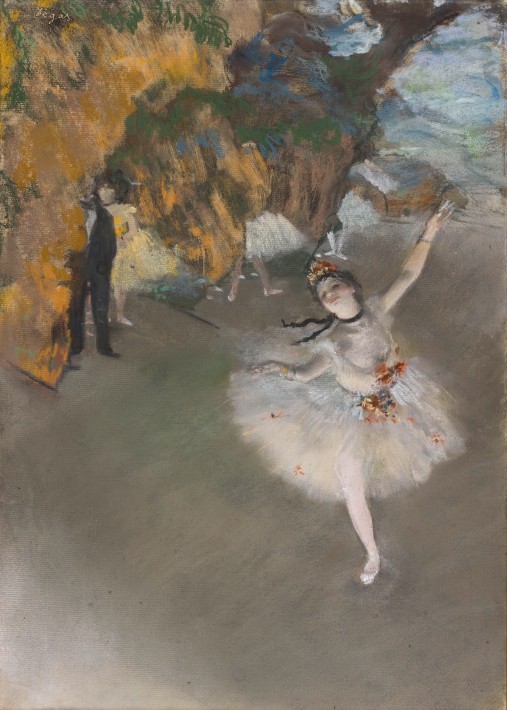March 27 – July 19, 2015 – Musée des impressionnismes Giverny

Edgar Degas was one of the leading figures of the Impressionist movement, and yet his relations with other members of the group were complex and he rarely practiced plein-air painting, a characteristic of impressionism. Instead he preferred more personal subjects, such as dancers’ bodies in movement, and he paid close attention to artificial lighting.
The exhibition brings together 70 works (paintings, pastels, drawings and sculptures) and focuses on four broad themes: his traditional artistic training, the Impressionist exhibitions, the question of landscape, and his relationships with the impressionists after 1890. Degas as an impressionist, certainly, but above all as an avant-garde artist.
This exhibition is organized in collaboration with the Musée d’Orsay.
Impressionist you said?
In the nineteenth century, a group of experimental artists wanting to break away from the strictures of classical French painting arrived in Normandy. Attracted by the quality of the light and the beauty of the unspoilt countryside, they set up their easels in the fresh air and painted the ever-changing landscape. This was the beginning of Impressionism and Normandy was the birthplace of the movement. Today, visitors from all over the world flock to the region to admire the timeless landscapes alongside the paintings they inspired. www.normandy-tourism.org/impressionism
Radicals in their time, early Impressionists violated the rules of academic painting. They constructed their pictures from freely brushed colours that took precedence over lines and contours, following the example of painters such as Eugène Delacroix and J. M. W. Turner. They also painted realistic scenes of modern life, and often painted outdoors. Previously, still lifes and portraits as well as landscapes were usually painted in a studio.[1] The Impressionists found that they could capture the momentary and transient effects of sunlight by painting en plein air. They portrayed overall visual effects instead of details, and used short “broken” brush strokes of mixed and pure unmixed colour—not blended smoothly or shaded, as was customary—to achieve an effect of intense colour vibration.
Impressionism emerged in France at the same time that a number of other painters, including the Italian artists known as the Macchiaioli, and Winslow Homer in the United States, were also exploring plein-air painting. The Impressionists, however, developed new techniques specific to the style. Encompassing what its adherents argued was a different way of seeing, it is an art of immediacy and movement, of candid poses and compositions, of the play of light expressed in a bright and varied use of colour.
The public, at first hostile, gradually came to believe that the Impressionists had captured a fresh and original vision, even if the art critics and art establishment disapproved of the new style.
By recreating the sensation in the eye that views the subject, rather than delineating the details of the subject, and by creating a welter of techniques and forms, Impressionism is a precursor of various painting styles, including Neo-Impressionism, Post-Impressionism, Fauvism, and Cubism.
